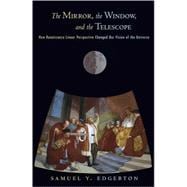
| List of Illustrations | p. ix |
| Preface | p. xiii |
| Introduction: Picturing the Mind's Eye | p. 1 |
| Crisis in Christendom | p. 11 |
| And God Said, "Let There Be Light!" Perspectiva naturalis | p. 21 |
| Fra Antonino | p. 30 |
| When Did Perspectiva naturalis Become Perspectiva artificialis? | p. 39 |
| Brunelleschi's Mirror | p. 44 |
| Brunelleschi's Method | p. 34 |
| Brunelleschi's Second Perspective Panel | p. 69 |
| Brunelleschi's Heritage: Masaccio's Trinity | p. 77 |
| "Oh, che dolce cosa é questa prospettiva!" Donatello and Masaccio | p. 89 |
| More Masaccio, Masolino, and Even Fra Angelico | p. 100 |
| Alberti's Method | p. 117 |
| Alberti's Window | p. 126 |
| Alberti's Legacy: Raphael's Stanza della Segnatura and Beyond | p. 133 |
| Galileo's "Perspective Tube" | p. 151 |
| Postface: Post perspectivam | p. 168 |
| Notes | p. 175 |
| Bibliography | p. 185 |
| Index | p. 193 |
| Table of Contents provided by Ingram. All Rights Reserved. |
The New copy of this book will include any supplemental materials advertised. Please check the title of the book to determine if it should include any access cards, study guides, lab manuals, CDs, etc.
The Used, Rental and eBook copies of this book are not guaranteed to include any supplemental materials. Typically, only the book itself is included. This is true even if the title states it includes any access cards, study guides, lab manuals, CDs, etc.